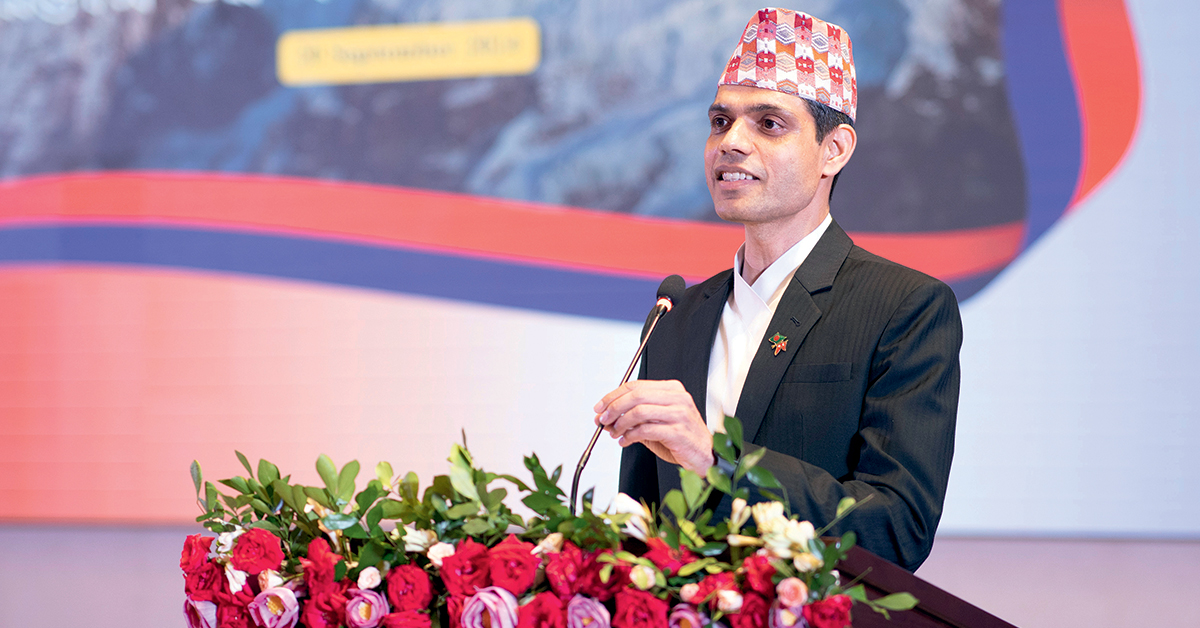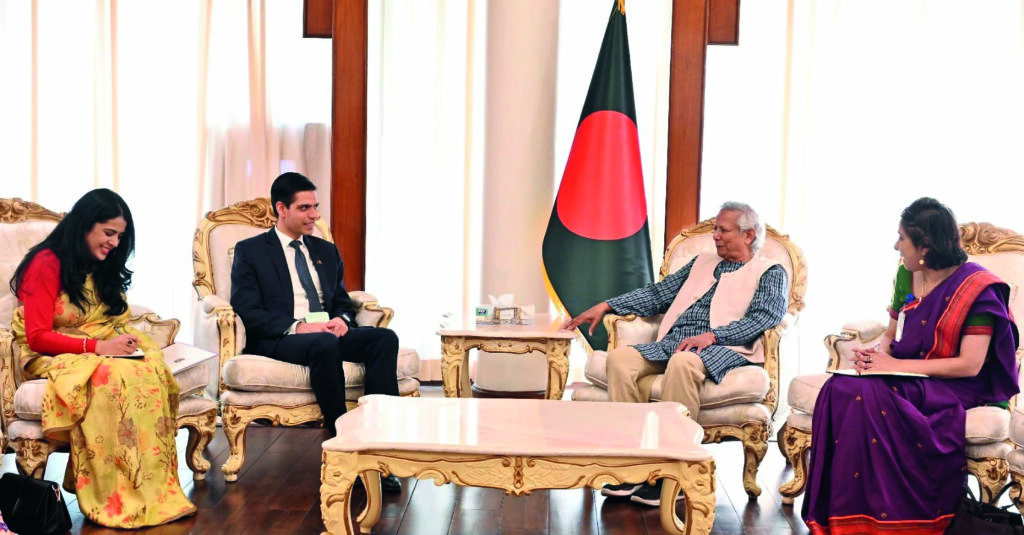

 27.14°C काठमाडौं
27.14°C काठमाडौं

One of Nepal’s significant achievements in recent years is the export of electricity to Bangladesh. This energy deal was successfully finalized on October 3, 2024, following six years of trilateral cooperation between Nepal, India, and Bangladesh. As a result, Nepal has begun exporting 40 megawatts of hydroelectricity to Bangladesh via Indian transmission lines. In this interview, The Diplomat Nepal speaks with Ghanshyam Bhandari, Nepal’s Ambassador to Bangladesh, who has played a key role in advancing energy cooperation between the two countries.
For any ambassador, it is indeed a matter of great contentment to witness the conclusion of such a landmark deal. I am no different. I am pleased that the trilateral agreement enabling the first-ever power export from Nepal to Bangladesh through the Indian grid has been signed during my tenure.
We have been able to finalize this deal six years after we signed an MoU between Nepal and Bangladesh on power sector cooperation in 2018. The trilateral agreement signed on 3 October last year (2024) stipulates that 40 megawatts of hydroelectricity will be exported from Nepal to Bangladesh through the Indian transmission lines for five months — from mid-June to mid-November — every year. Nepal will transmit power to India through the 400KV Dhalkebar-Muzaffarpur cross-border transmission lines before India transmits the equivalent to Bangladesh through Bahrampur (India)-Bheramara (Bangladesh) transmission lines.
In fact, the agreement has already come to fruition with the ‘trail run’ of the export of electricity from Nepal to Bangladesh on November 15, 2024. The next export cycle is scheduled to begin on June 15, 2025. Though a small and symbolic milestone in terms of volume, I believe that it is a significant headway that can serve as a springboard for future energy cooperation in the sub-region.
I think it is just a rhetorical question, making a widely-accepted point rather than seeking an answer. Given our geographical realities and the fact that Nepal and Bangladesh do not share borders, it is absolutely necessary to have India’s support and cooperation to realize power trade between our countries.
Power trade between Nepal and Bangladesh can be materialized only when electrons flow through the Indian territory. This means trilateral cooperation is a pre-requisite. We are encouraged by the commencement of the first trilateral power transaction from Nepal to Bangladesh, through the Indian grid. This was possible when the idea of enabling power export was agreed upon at the highest political level. And I am confident that we will be able to build on this and make further strides.
In recent years, there has been a lot of talk about Nepal’s hydropower potential and Bangladesh’s increasing energy needs. We all know Nepal is far from optimally utilizing its hydropower potential. Similarly, rapid socio-economic development achieved by Bangladesh over the years is a well-known story. These realities present an excellent opportunity for bilateral collaboration in the energy sector.
Our Bangladeshi friends are fully aware of this opportunity. And they do not mince their words when they talk about Nepal’s hydropower potential and Bangladesh’s clean energy needs. Of late, we have been more focused on ways to realize this ‘win-win enterprise.’ When we look at the ongoing project-based negotiations, we remain optimistic about strengthening the energy partnership for the mutual benefit of our two countries.

What we have achieved as of now is just a small feat. It may be pertinent to recall at least two other projects on which negotiations are underway. We have agreed to finalize at the earliest a joint venture agreement on the development of the 683 MW Sunkoshi III Hydropower Project. Nepal has already shared the reports of the feasibility study and environmental impact assessment with Bangladesh. We await the latter’s response. Similarly, the Government of Bangladesh is negotiating with GMR Group of India on the power purchase agreement of 500 MW of electricity from the 900MW run-of-the-river Upper Karnali Hydropower Project, which is supposed to be developed by the GMR Group in collaboration with two public sector undertakings of India.
When we talk about these projects, I want to stress that the energy partnership between our countries is a sunrise industry, with immense possibilities of expansion. Nepal needs more investment in the hydropower sector and an enhanced level of engagement among our countries in the sub-region is crucial for our collective energy security and economic growth.
Nepal and Bangladesh have always enjoyed excellent relations – be it at political, economic, cultural, or people-to-people levels. There has never been any need to ‘calm the nerves’, and we often talk about enabling tailwinds emanating from the spirit of good neighbourliness.
It is not least in this light that I see a bright and promising future for Nepal-Bangladesh economic cooperation. It is also because only a few bilateral relations between the two close neighbours embody immense promises and potentials such as the ones we do. With the realization of power trade between Nepal and Bangladesh, we have entered into a new phase of economic partnership. I am more confident now than ever before that our two countries will continue to achieve a higher level of economic cooperation.
The need will be to ensure that most of our conversation is not about what we could not do, but about what we can and should do next. We must leverage the transformative power of our collective strength, solidarity, and cooperation for the mutual benefit of our people.